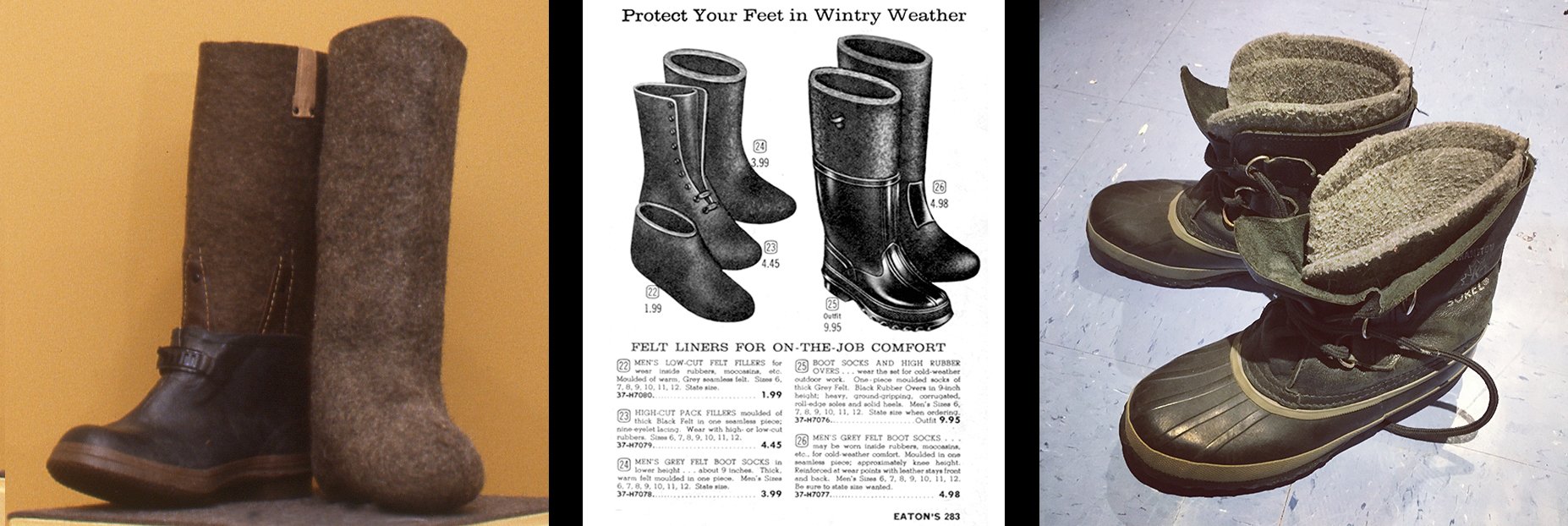A Social History of Felt in Canada: Part 4
Winter boots:
A Cold War in which felt meets rubber…
LEFT: Valenki 1930s made in Russia and American Work Boot 1930s manufactured by B.F. Goodrich Co. Collection: Bata Shoe Museum
CENTRE: Winter boots from Eaton’s catalogue 1963
RIGHT: Sorels – Manitou Classic 1990s, rubber and leather with felt liners
Russia was historically a longtime leader in felt-making. In particular, molded felt boots called Valenki were made in the millions for civilians as well as for the Red Army. Soldiers gave these boots more durability by cutting old tires to fit the soles and attaching them by wire over the boot. American companies improved upon this design by fabricating rubber galoshes to fit over the felt boots.
But, it was Canada that made the combination of felt and rubber world-famous in boot manufacturing. Kaufman Rubber (founded in 1907, later known as Kaufman Footwear) and The Rumpel Felt Company (founded in 1912) operated side by side in industry and across the street from one another in Kitchener, Ontario (formerly Berlin, Ontario).
Kaufman is well-known for creating the popular Sorel line of winter boots, a brand made only in Canada until, struggling to compete with cheap imports, the company declared bankruptcy in 2000. The American-based Columbia Sportswear, purchased the trademark and now out-source production mainly from China.
The Rumpel Felt Company made the felt liners for Kaufman boots. George Rumpel, a shoemaker who emigrated from Germany in 1868 would come to be known in his time as the “Felt King of Canada.” He originally bought The Berlin Felt Boot Company in 1879, but after a sojourn with his sons studying advanced felt-making back in Germany, he returned to his new home to grow his namesake business, manufacturing a wide range of industrial felts. The Rumpel Felt Company was the oldest and longest-running felt factory in Canada before closing its doors in 2007. KW
